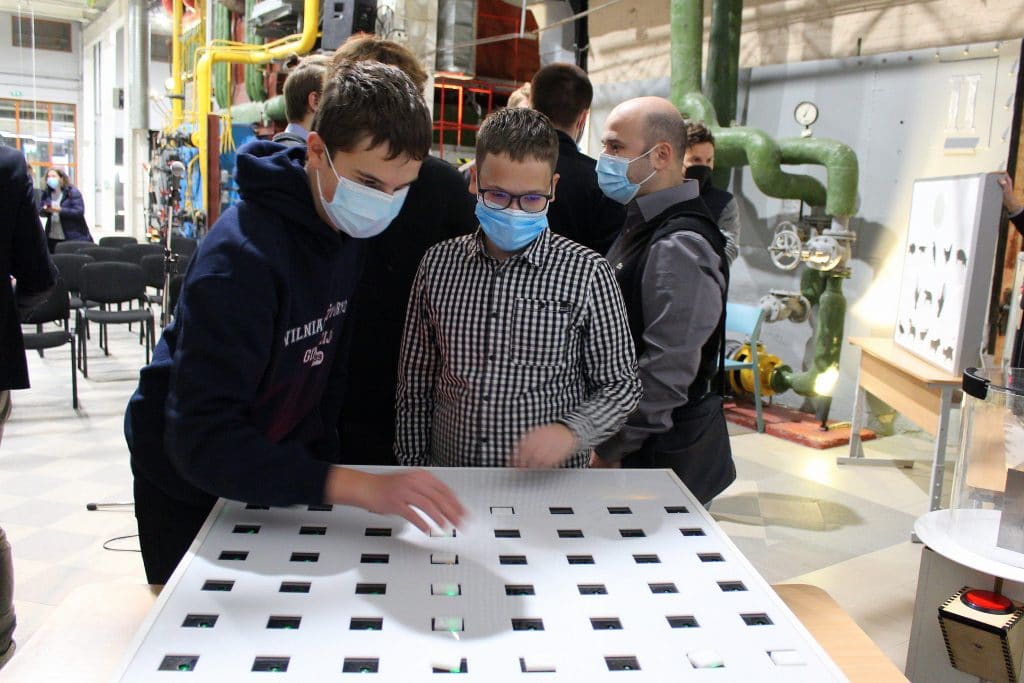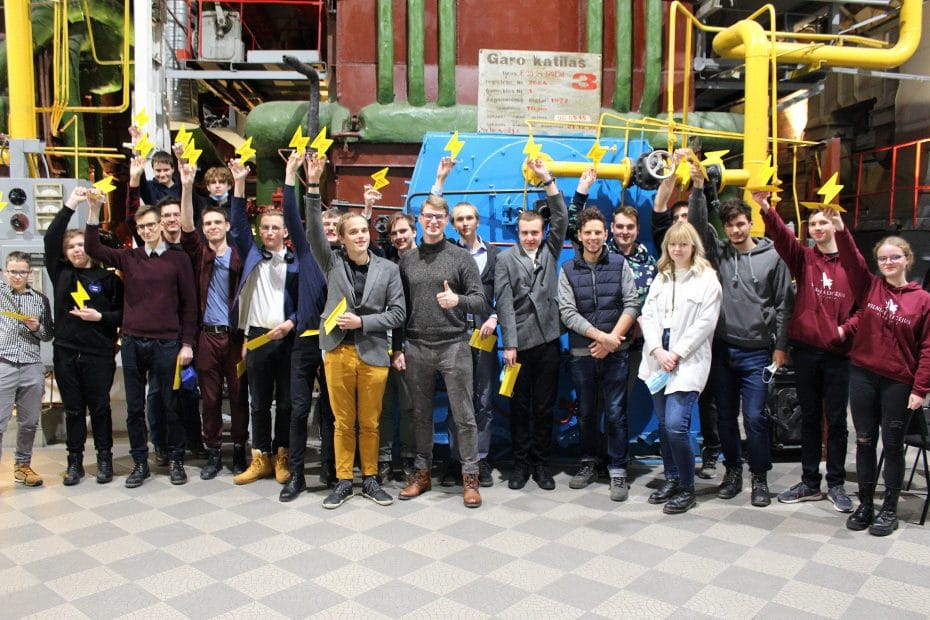Last week, the project “Upcycling – Bring Old Electronics to New Life!” was completed at Energy and Technology Museum. Since the fall, schoolchildren and students have created new exhibits from old electronics that will be displayed in various spaces in the museum.
The magic of programming
During the project, electronic components were supplied by the electronics collection and recycling company “EMP Recycling”. The aim of the project is to revive unused things for a second life.
“Vilnius Tech” university students Kornelijus Petronis and Povilas Urbonavičius created a retro game console “Retro Game Station” from an old non-functioning television. It is controlled using a camera and a video recognition algorithm that finds the hand of the person in front and thus, remotely, controls the game.


“This Google algorithm is new and smart. It recognizes the hand from any angle and its library consists of hundreds of thousands of hand-held photographs from all over the internet. Our project shows how video recognition technologies have been developed, and the games themselves evoke the player’s reaction,” said Urbonavičius.
The biggest challenge for the first place winners was programming – how to match the camera to display the original image and the image with the filter at the same time. “How did we solve this? A little bit of programming, a little bit of magic,” joked Petronis.


Music table
“Vilnius Tech” mechatronics and robotics student Matas Balčiūnas started his musical project earlier than the other participants – last May.
“I was looking for various internships where I could learn more about programming, electronics, and go deeper into engineering. I toured the corner of the museum’s music exhibits. Because they are interactive, visitors like to stop and play here, I decided to add a “Music Table” to the exposition,” said the second place winner.


A “Music Table” is an instrument that is played by covering various boxes. The infrared sensors below each table window send a signal to the microcontrollers, then to a computer that stores music sounds.
“The software part was the main challenge and my goal. More than once I realized I was doing something wrong. I had to ask a lot of questions to the project curator Andžej, the game console developers Kornelijus and Povilas. They are cool programmers, they helped me a lot and I am grateful to them,” said Balčiūnas.


From an ATM and a hair dryer
“Vilnius Tech” sophomores Juras Valentavičius and Simonas Jurkynas created an “Interactive Animal Stand” that complemented the museum’s Kids’ Stop. The students spoke about their internship during the “Upcycling” project, since they lacked practical workshops during their studies due to quarantine lockdown.
“We wanted to gain practice in engineering. Last year, quarantine made it difficult to gain practical knowledge live. The biggest challenge of the project was software search. We learned how to cut with a laser, we found a lot of materials right here, in the museum,” said Valentavičius.


The ten students of Vilnius Lyceum who participated in the project created “Musical Stepper Motors”. The exhibit is also made of used electronic parts: stepper motors are taken from an old ATM, the power supply is from an old computer, the switch is from a faulty hair dryer. Putting it all together, the device played Johan Strauss opus. This student project won third place for meticulous and precise performance.


Finding friends
Other students of the Vilnius Lyceum created the “Electric Carrier”. The exhibit introduces the basic law of physics – electricity transmission. “We realized that items that might look like rubbish are becoming worth their weight in gold in another project,” said Manfredas Feiferas, a twelfth-grader.
Students from “Tesla Academy”, the technical creation club of Energy and Technology Museum, also took part in the project. The youngest participant in this team is a seventh grade student.


“We gathered at “Tesla Academy” without knowing each other. We were hoping to learn new things and maybe make some friends. After several sessions, we started working in a team,” Domantas Gramata recalled, creating a memory game with the team. He said, “We learned the basics of 3D modeling, soldering, laser and how to implement a project of this level from start to delivery.”
Awards that inspire creation
The “Upcycling” project took place in September-December in the electronics workshop of Energy and Technology Museum. The curator of the project was Andžej Kuldoš.
Participants’ work was judged on the durability, design and application of the engineering solutions. The museum director Mykolas Bistrickas evaluated the engineering of the exhibits, the museum graphic artist Skaistė Balkytė – their design, guest judge Mindaugas Talaikis – the programming part.


The awards for the project winners were set up by the electronics store “Anodas”, which presented a “gift that inspires creation” – coupons to purchase equipment and tools for participants’ future projects. All participants also received invitations to visit the Escape Room of Energy and Technology Museum with friends or family.
Project winners:
1st place – Kornelijus Petronis and Povilas Urbonavičius, “Retro Game Station” – for the best engineering solutions and functional design.
2nd place – Matas Balčiūnas, “Music Table” – for the synthesis of science and music.
3rd place – Kristupas Lapinskas, Rūta Karklytė, Armanis Tomas Barsamyan, Domas Berulis, Liepa Griciūtė, Kyva Keys, “Musical Stepper Motors” – for meticulous and precise performance.


Project sponsors: “EMP Recycling”, “Anodas” and Vilnius City Municipality.

